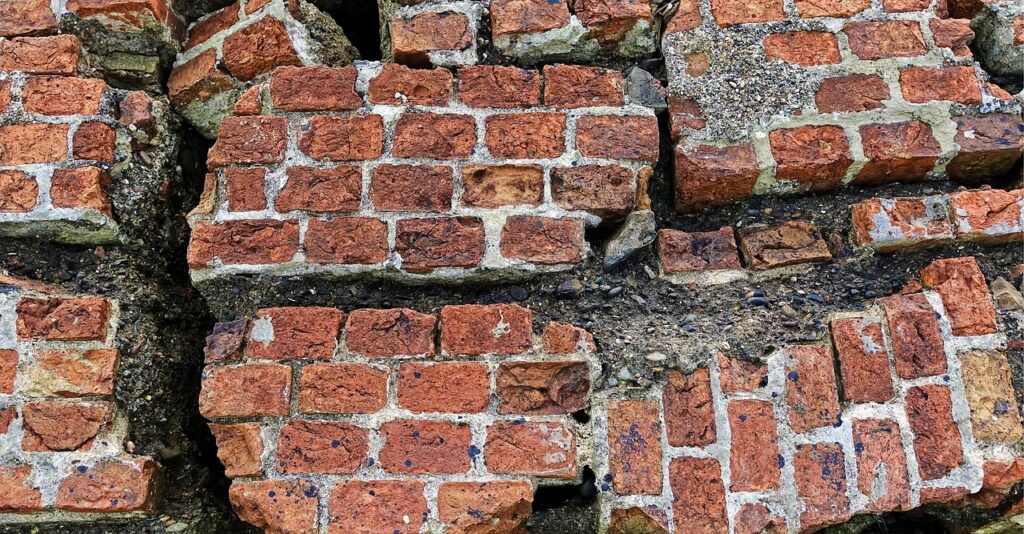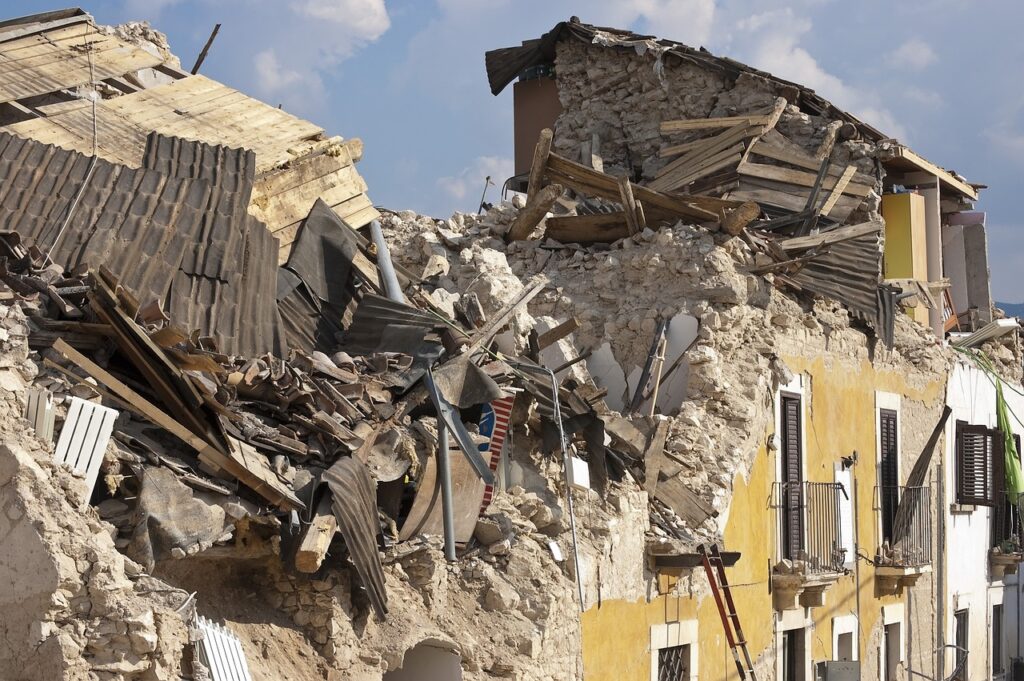Breaking News: A Major Earthquake Strikes Asia
Hold onto your seats because we have some breaking news coming your way! Brace yourself as Asia has just been struck by a major earthquake that has left the continent shaken. The impact of this seismic event is not to be taken lightly, causing widespread destruction and sending shockwaves throughout the region. Stay tuned as we dive deeper into the latest updates and provide you with all the necessary information on this cataclysmic event.

Impact of the Earthquake
Structural Damage
The earthquake has caused significant structural damage in the affected regions. Buildings, bridges, and roads have collapsed or been severely damaged, leaving behind a trail of destruction. The impact of the quake on infrastructural elements such as power grids, water supply systems, and communication networks has further exacerbated the situation.
Loss of Life
Tragically, the earthquake has resulted in the loss of numerous lives. As the ground shook violently, many people were trapped under the rubble, unable to escape. The loss of loved ones and the toll on communities is immeasurable, as families mourn the passing of their dear ones.
Injuries
The seismic activity has also led to a significant number of injuries among survivors. Broken bones, head injuries, and lacerations are just some of the physical wounds suffered by those caught in the quake. The injured require immediate medical attention and specialized care to treat their wounds and prevent further complications.
Disruption of Infrastructure
The earthquake has caused widespread disruption of essential infrastructure. Power outages and water shortages are common, leaving residents without basic necessities. Communication networks have been severed, making it difficult for people to reach out for help or stay connected with their loved ones. Transportation systems have been heavily impacted, hindering rescue and relief efforts.
Affected Regions
Country A
Country A has been one of the hardest hit by the earthquake. Its cities and towns have witnessed widespread destruction, with collapsed buildings and infrastructure in ruins. The loss of life and injuries are high, creating a desperate need for immediate assistance and relief efforts.
Country B
In Country B, the earthquake has left a trail of devastation. Many areas are inaccessible due to damaged roads and infrastructure, making it challenging for rescue teams to reach survivors. The affected population is in dire need of rescue, medical aid, and basic supplies to sustain themselves.
Country C
Country C has also been affected by the powerful earthquake. The impact on infrastructure and buildings has left communities in shock. The immediate focus is on saving lives and providing relief to those affected, as the devastation has been immense.
Country D
Although the earthquake’s impact on Country D is relatively lower compared to other affected regions, it has still caused significant damage and loss. Communities in Country D are facing challenges in terms of disruptions in daily life, and the government is working to provide the necessary support to address the situation.
Rescue and Relief Efforts
Emergency Response Teams
Emergency response teams have swiftly been mobilized to the affected regions. These teams, consisting of trained professionals, are working tirelessly to rescue survivors trapped under collapsed buildings and provide immediate medical assistance.
Search and Rescue Operations
Search and rescue operations are being conducted in coordination with local authorities and international teams. Highly skilled personnel equipped with specialized tools and equipment are combing through the debris, searching for survivors and ensuring their safe extraction.
Medical Aid and Facilities
Medical teams and facilities have been dispatched to the affected regions to provide on-site medical aid and set up temporary hospitals. These facilities aim to address the immediate healthcare needs of injured survivors and prevent further complications from arising.
Distribution of Relief Supplies
Relief supplies, including food, clean water, blankets, and essential hygiene products, are being distributed to affected communities. Aid organizations and volunteers are working together to ensure that these supplies reach those who need them most.
Government Response
Declaration of State of Emergency
In light of the enormity of the situation, the governments of the affected countries have declared a state of emergency. This declaration allows for the mobilization of resources and the implementation of emergency measures to provide immediate relief and support to affected communities.
Mobilization of Resources
Governments have initiated the mobilization of both national and international resources to bolster rescue and relief efforts. This includes deploying military personnel, as well as utilizing government funds and assets to provide the necessary support and infrastructure.
Coordination with International Agencies
To optimize rescue and relief efforts, affected governments are coordinating closely with international agencies such as the United Nations, World Health Organization, and regional bodies. This collaboration ensures the efficient delivery of aid and the utilization of expertise from around the world.
Establishment of Temporary Shelters
Temporary shelters are being established to accommodate displaced individuals and families. These shelters provide a safe haven for those who have lost their homes and are crucial for ensuring their well-being and protection.

Implications on Economy
Infrastructure Reconstruction
The earthquake’s impact on infrastructure necessitates extensive reconstruction efforts. Governments and international organizations will need to allocate significant funds and resources to rebuild roads, bridges, schools, and hospitals. This reconstruction process will not only restore essential services but also create jobs and stimulate economic growth.
Impact on Local Industries
Local industries have been severely affected by the earthquake. Factories and businesses have suffered damage, leading to a decline in production and economic output. The disruption in supply chains and reduced consumer demand further exacerbate the economic impact on these industries.
Foreign Aid and Assistance
Foreign countries and organizations have shown solidarity and provided aid and assistance to the affected regions. This foreign aid helps alleviate the financial burden on governments and facilitates the implementation of relief and recovery measures.
Long-term Economic Recovery
The earthquake’s economic impact will be felt long after the immediate relief efforts conclude. Governments must formulate long-term strategies to stimulate economic recovery and build resilience against future disasters. Investments in infrastructure, job creation, and sustainable industries will play a critical role in achieving long-term economic stability.
Regional Cooperation
Sharing of Resources and Expertise
In the face of a major disaster, affected countries are coming together to share resources and expertise. This regional cooperation ensures that available resources are maximized and that countries can learn from each other’s experiences and best practices.
Coordinated Relief Efforts
Coordinated relief efforts among affected countries and regional bodies lead to more effective and efficient distribution of aid. By sharing information and coordinating relief operations, duplication of efforts is minimized, and resources are utilized optimally.
Assistance from neighboring countries
Neighboring countries in the region have extended a helping hand to the affected nations. Whether through financial aid, sending search and rescue teams, or providing essential supplies, these acts of solidarity strengthen regional bonds and contribute to more comprehensive relief efforts.
International Support and Solidarity
On a global scale, countries worldwide are expressing their support and solidarity with the affected regions. International organizations and governments are pledging financial aid, sending humanitarian aid workers, and providing technical assistance to help affected countries recover and rebuild.

Lessons from Past Earthquakes
Improvement in Building Codes and Regulations
Past earthquakes have highlighted the importance of robust building codes and regulations. Governments must review and strengthen these codes to ensure structures can withstand seismic activity. Strict enforcement of building regulations will reduce the vulnerability of communities to future earthquakes.
Early Warning Systems
Investing in early warning systems is crucial for mitigating the impact of earthquakes. These systems enable communities to receive advance warnings, allowing people to seek shelter, emergency services to mobilize, and critical infrastructure to activate emergency response protocols.
Preparedness and Training Programs
Preparedness and training programs play a vital role in equipping communities with the necessary knowledge and skills to respond effectively to earthquakes. Educating the population on evacuation procedures, first aid, and disaster preparedness fosters resilience and saves lives.
Community Resilience Initiatives
Building community resilience is essential for withstanding the aftermath of earthquakes. Engaging communities in disaster resilience initiatives, such as establishing neighborhood emergency response teams and conducting drills, strengthens community cohesion and preparedness.
Psychological Impact on Survivors
Post-Traumatic Stress Disorder (PTSD)
Survivors of the earthquake may experience psychological distress, including post-traumatic stress disorder (PTSD). Witnessing the destruction and losing loved ones can have long-lasting effects on mental health. Mental health professionals must provide counseling and support to help survivors cope with their traumatic experiences.
Counseling and Mental Health Support
Counseling services and mental health support are essential for survivors to overcome the emotional toll of the earthquake. Providing access to trained professionals and creating safe spaces for individuals to express their feelings can aid in the healing process.
Rebuilding Sense of Security and Trust
The earthquake has shattered the sense of security and trust within affected communities. Rebuilding this sense of security requires not only physical reconstruction but also fostering a supportive environment. Encouraging community engagement, promoting open communication, and addressing the concerns and fears of survivors are crucial steps in rebuilding trust.
Supporting Children and Vulnerable Populations
Children and vulnerable populations are particularly susceptible to the psychological impact of the earthquake. Specialized support programs must be implemented to address their unique needs and ensure their well-being. This includes providing counseling, safe spaces, and access to education and healthcare services.

Environmental Aftermath
Landslides and Avalanches
The earthquake has triggered landslides and avalanches in mountainous regions, further exacerbating the disaster. These additional natural hazards pose a threat to communities and impede rescue and relief operations. Clearing these areas and ensuring their stability is crucial for the safety of affected populations.
Impact on Water Sources
The seismic activity can disrupt water sources, leading to contamination or scarcity of clean water. Ensuring the availability of safe drinking water is paramount to prevent the spread of waterborne diseases and meet the basic needs of affected communities.
Potential for Aftershocks
Aftershocks are a common occurrence after a major earthquake. As affected regions continue to experience aftershocks, it is crucial to monitor and assess their magnitude and potential impact. This information enables better preparedness and response, reducing the risk of further damage and harm to individuals.
Ecological Rehabilitation
The earthquake’s impact on the environment requires ecological rehabilitation efforts. Rehabilitating damaged ecosystems, reforestation, and addressing soil erosion are vital for restoring the natural balance and safeguarding the region’s biodiversity.
Preventive Measures for the Future
Earthquake Preparedness Education
Empowering communities with earthquake preparedness education is crucial for future disaster resilience. Educating individuals on evacuation techniques, first aid, and the importance of early warning systems equips them with the knowledge needed to respond effectively in times of crisis.
Investment in Seismic Infrastructure
Investing in seismic infrastructure, such as retrofitting buildings and bridges, ensures their resilience against future earthquakes. Governments should prioritize allocating funds for infrastructure projects that incorporate seismic-resistant design principles and technologies.
Urban Planning and Development
Integrating earthquake resilience into urban planning and development is essential for reducing vulnerability. Proper zoning, land use regulations, and enforcement of building codes contribute to safer urban environments and minimize the risks associated with seismic activity.
Disaster Risk Reduction Strategies
Developing comprehensive disaster risk reduction strategies is imperative to mitigate the impact of future earthquakes. Governments should actively engage in hazard mapping, early warning systems, and community-based disaster risk reduction programs. By implementing proactive measures, the potential devastation of future earthquakes can be minimized.
In conclusion, the impact of the earthquake on affected regions has been devastating, resulting in structural damage, loss of life, injuries, and disruption of infrastructure. However, through rescue and relief efforts, government response, regional cooperation, and lessons from past earthquakes, affected countries can work towards recovery and future resilience. It is crucial to address the psychological impact on survivors, restore the environment, and implement preventive measures for a safer and more prepared future. The international community’s support and solidarity contribute to the collective efforts in alleviating the suffering and aiding in the long-term economic recovery of the affected regions.


